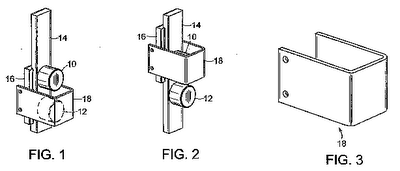
I'd heard all the claims before, in the New York Time Story
Our Lives, Controlled From Some Guy’s CouchWhat just occurred to me is, Hey, this sounds like the basis for a new religion - Simology. I've already got the symbol worked out (you were wondering what that was, right? So, how do you create a new religion, and, the most important question for all religious founders, how do you obtain money and power through it?
The basic premise of the article, and Nick Bostrom's logic, is that once a society achieves a certain level of technological sophistication it is almost guaranteed to be able to run simulations:
"Dr. Bostrom assumes that technological advances could produce a computer with more processing power than all the brains in the world, and that advanced humans, or “posthumans,” could run “ancestor simulations” of their evolutionary history by creating virtual worlds inhabited by virtual people with fully developed virtual nervous systems.
Some computer experts have projected, based on trends in processing power, that we will have such a computer by the middle of this century"
I think this may be minimizing things a little. The advanced civilization does not have to be human, nor does it have to live in a universe anything like the simulation. We run universal simulations today on super computers. They are limited to a few million particles (or galaxies, depending on the scale), but we simulate varying parameters that typically don't look like our universe - in a attempt to find those that do.
What if this is a more advanced total universal simulation? Here are a few parameters, some initial conditions, lets see what happens? Since the universe in which the simulation is running does not have to be like ours, the arguments of "You need a universe to simulate one" don't hold true. We may not be able to simulate the entire universe, but I could see us doing "evolution on earth" some time next century. If you had 1THz, you could probably easily do 1M years a second. For those in the simulation though, time would have to seem real for evolution to work.
The article approaches it from a philosophical point of view, but what about the scientific one? i.e. If it was, how would we tell?
There may be some testable things:
1) Space would be grainy, pixelated if you like. Which it is at the quantum level, think planck length.
2) Time would be quantized due to processing clock cycles, which again, it seems to be at the planck time
3) There would be a set of relatively simple laws (lines of code) that everything followed at the lowest level, which most scientist would argue there are, or seem to be, if only they could work them out
4) There would be a set of seemingly random initial conditions to our universe (check again)
5) There would be a built in random factor, otherwise it would not be a simulation (what's the point if you know the outcome?). Again, quantum mechanics / heisenberg.
I think there's more evidence here than most religions, which brings me back to my initial question - how do you start one?
There needs to be some online content (a book is sooo last millenia), a charismatic leader, some pointless rituals and some hope. Oh, and some followers. I have lots of hope, could put together some content, any volunteers for following?
Tags:
sims,
simulation,
video,
game,
computer,
earth,
life,
quantum,
religion






